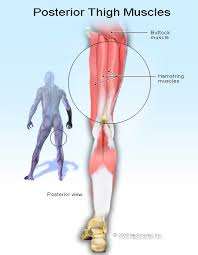
"CVWC-Affordable Holistic Therapy!" (TM)
As I begin to write this article on a Sunday evening I am once again astounded by the number of Major League Baseball players who are unable to play because of a strained hamstring, a tight Quadriceps muscle, a sprained ankle, sore elbow and sore shoulder. I am sure that many who are reading this, despite their aches and pains, will report to work on Monday morning. I do realize that in order to play at 100% the player needs to be able to run, catch a ball and swing a bat.
In my last article I mentioned the fact that I believe that many of our athletes are over trained and the muscle has minimal ability to function and is a movement away from being dysfunctional. What is meant by this? Most individuals that train for a particular sport have specific activities that they perform that is meant to allow them to perform at a higher level. Why do they have so many injuries then? Overuse is the answer. Most times the repetitiveness and performing improperly because of a fatigue factor will cause the muscles needed to shut down and learn to rely on muscles of adaptation for movement.
We will look at the Hamstring muscle group in this article. The Hamstring muscle is made up of four different muscles that work as the opposing muscle to the Quadriceps (front thigh muscles). It is a muscle group that is often described by many as tight like Banjo strings and will limit many professionals as well as weekend athletes. In Fundamental Movement (SM) these muscles have two functions: the first being they do work with the Quadriceps muscle group in bending and straightening the knee joint. Secondly, they act like puppet strings to help in positioning the pelvis. This is their functionality and how they assist the Quadriceps muscle.
In the majority of cases these muscle are over used and during the different activities are prohibited from moving through a full range. They are often used also as muscle of dynamics and in reality are primarily muscles that help posture the Pelvis. What this means is that the muscle fiber instead of adding to the dynamics of movement become the primary muscle and the body is just not designed in that fashion. I have found that once the muscle is released using Muscle Release Therapy, MRTh® and a proper movement pattern is re-established that the proverbial tight Hamstring become very functional and are no longer "tight".
In traditional activities that individuals perform, individuals move too fast through the movement process and hinder the proper muscle response. Professional athletes do quite a bit of plyometric work to create what they feel will help them be more explosive in their movement. In the majority of cases they limit the range of motion in the fiber and will often create an improper tension on that portion of the skeleton and associated joints. This I find to be the root cause of the injury. By developing an environment of abnormal tension will set the internal structure up for failure.
"I will make them better!" How and why? With the hamstring muscles we will reduce the unnatural tension and take away the holding patterns they are in. Once these holding patterns are removed that group of muscles will function at the level they need to. Many that come in complaining of their hamstrings are often amazed that the restriction they experienced goes away without ever touching them. Many tell me to get in there and work them deeply but that is not the answer. The depth of the Muscle Release Therapy, MRTh® does go the level of the skeleton (bone) but without pressure. We use the tissue to create the change by accessing the nerve response needed to balance the movement.
Till next time, remember even if the Hamstring is injured, proper rebalancing to it will allow it to become healthy again and allow it to truly function in the right way. Next Wednesday evening (April 23, 2014) I will be presenting a webinar on the movement of the lower extremity and also for the manual and movement therapist a short demonstration on how to balance it. Call 216-364-0152 for details.
.....there is always A REASON TO HOPE!
Dennis
 RSS Feed
RSS Feed
